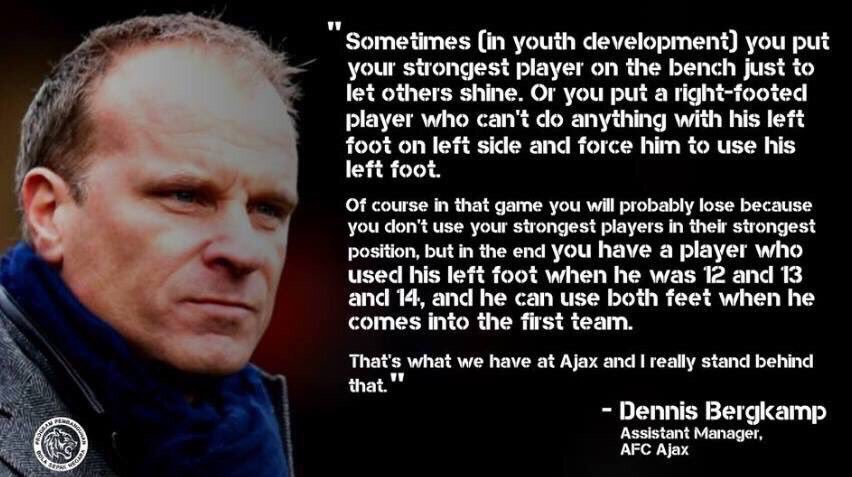I’ve been involved in youth athletic development for over 10 years now across a variety of sports and contexts. Unfortunately, I regularly see the same mistakes appear in athletic development programs for young athletes…
1. Going sport-specific too soon
I see this one quite a lot. A coach or parent often requests a “sport-specific” training program for their under 12’s players. I recently heard a great analogy from Jonny Fraser on this topic, likening movement skill to language skill:
- Alphabet – Learning a skill
- Word – Combining elements of locomotion/object control
- Sentence – Linking movements to demonstrate a complex skill
- Paragraph – Linking movements into exercises or sporting activity
Going straight into a sport-specific program without having a great grasp of the fundamentals of human movement is like trying to teach a child to use paragraphs without learning the alphabet. Ultimately, you are putting the cart before the horse…
 Earn the right to go sport-specific by mastering the general fundamentals!
Earn the right to go sport-specific by mastering the general fundamentals!Any athlete needs to earn the right to advance from fundamentals to complexity and from general to sport-specific after learning to manage their body in the basic foundations of movement. These set the scene for more complex skills such as Olympic lifting, multi-directional bounding, and combinations of sport specific movements. In the world of athletic development, our alphabet is:
- Squat (2 feet & 1 foot)
- Jump & Land (2 feet & 1 foot)
- Hip Hinge
- Push (Vertical & Horizontal)
- Pull (Vertical & Horizontal)
- Brace
- Rotate
These are what should form the backbone of an entry level Athletic Development Program, in order to create well rounded athletes, capable of progressing onto higher level skills. The great thing about these movements is you can do these without any equipment at all and can incorporate them into an on pitch warm up.
2. Chasing load too soon
Another typical mistake made by a lot of Athletic Development coaches is chasing external load/resistance/volume too soon. Often this can look like an athlete being encouraged (inappropriately) to chase the achievement of a certain load on the bar (eg. 100kg squat) or undertake a program of excessive training volume (eg. 10 x 10s) or frequency (eg. 5 sessions per week). This leads to a reduction in the quality and efficiency of the movement and training itself. Again, often this comes down to a failure to keep a handle on the ego of the coach or athlete – or sometimes both!
A big issue with this is that often once an athlete achieves a certain external load (eg. 100kg squat) regardless of the quality of the movement, they are often resistant to deloading this movement in order to improve the quality. I’ve had this battle many times with athletes I’ve inherited or who have come onto my program after lifting on their own.
A simple concept that contrasts this approach is “Minimal Effective Dose”. In this idea, the stress of exercise is similar to the toxicity of a medicine:
- A small dose may cause a positive effect
- A large dose may be catastrophic
- Over time the body becomes accustomed and requires greater dosage
In simple terms, more is not always better! This approach is just giving an appropriate dose of an exercise stress to provoke a positive response and continue to make continued progress. For example, in beginner trainers, it’s unnecessary to undertake a high volume (eg. 5 sets of 10 reps) when a low volume will achieve a positive outcome (eg. 3 sets of 6 reps). Keep in mind that once the body adapts, it requires a higher level of stress to provoke adaptation. Therefore, if you bombard an athlete with a high volume, high intensity or advanced training method, where do you go from there? It’s akin to using all your tools early on. What will you do when that 18 year old has adapted to your program? What tools do you have left to continue to make progress?
Rather than jumping ahead too far, your athletes should earn the right to gradually progress the load, volume or frequency of training over time.
3.Not taking a long term view
This is the biggest underlying mistake that gradually leads to the others mentioned previously. Unfortunately, often those responsible for youth athletes during their development are too focussed on the short term. This is often manifested as coaches being overly concerned by:
- Winning or “Peaking” at the weekend
- Winning the season championship
- Selection for Junior Representative Teams
- Ego/Reputation of the coach or athlete
What this focus often leads to is the failure to provide appropriate challenge for athletes. For example, bringing players who are stronger or more skillfull down a level to win a cup match against a far weaker team, simply because they are eligible. Another example is to constantly build on an athlete’s physical strengths (eg. bench press) without addressing their weaknesses (eg. acceleration technique). This doesn’t provide the athlete with an appropriate challenge and is often not in their best interests long-term, leading to under-developed athletes. In Athletic Development, this is often manifested as coaches who are overly concerned by physical testing results and short term progress on these numbers, compared to building a toolbox of competent movement skills with their athletes.
Essentially, the coach is failing to “Keep the main thing, the main thing.” That is – the development of athletes who excel at the senior level, not at the junior level…
Are you a grassroots youth sport coach or PE teacher who wants to improve the athleticism of your athletes?? Check out our Fundamental series athletic development programs here.




2 thoughts on “The 3 biggest mistakes coaches make in Athletic Development (Part 1)”
Comments are closed.